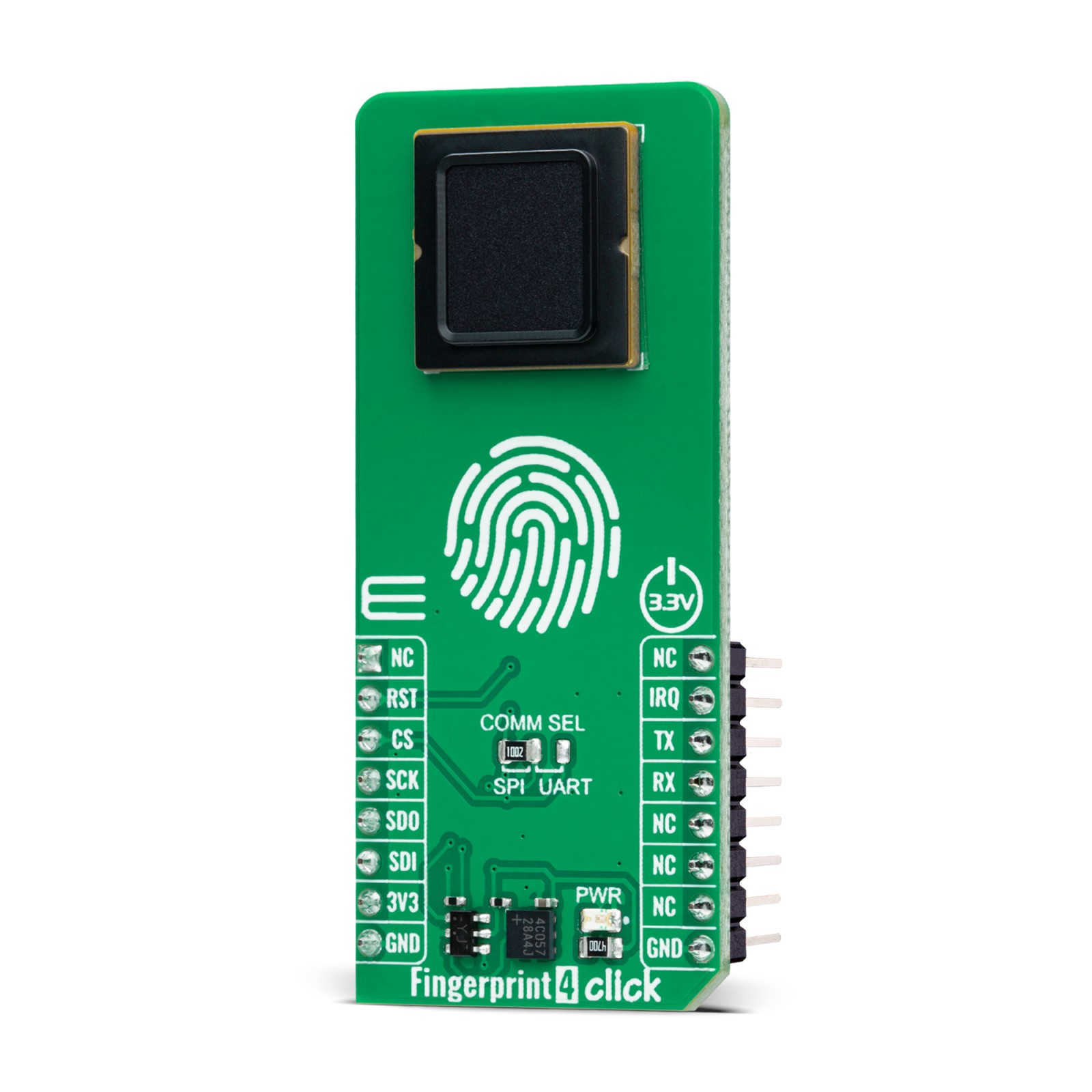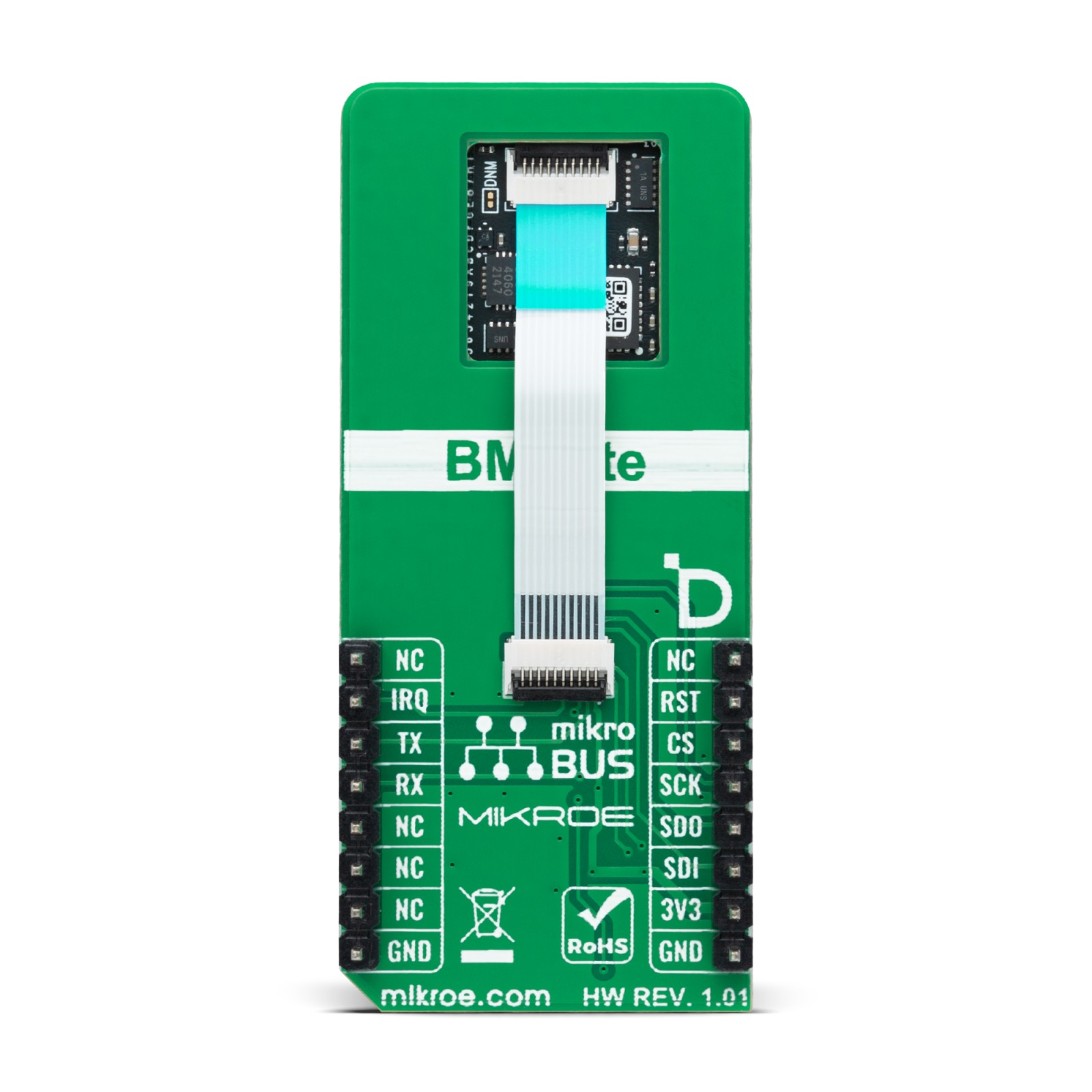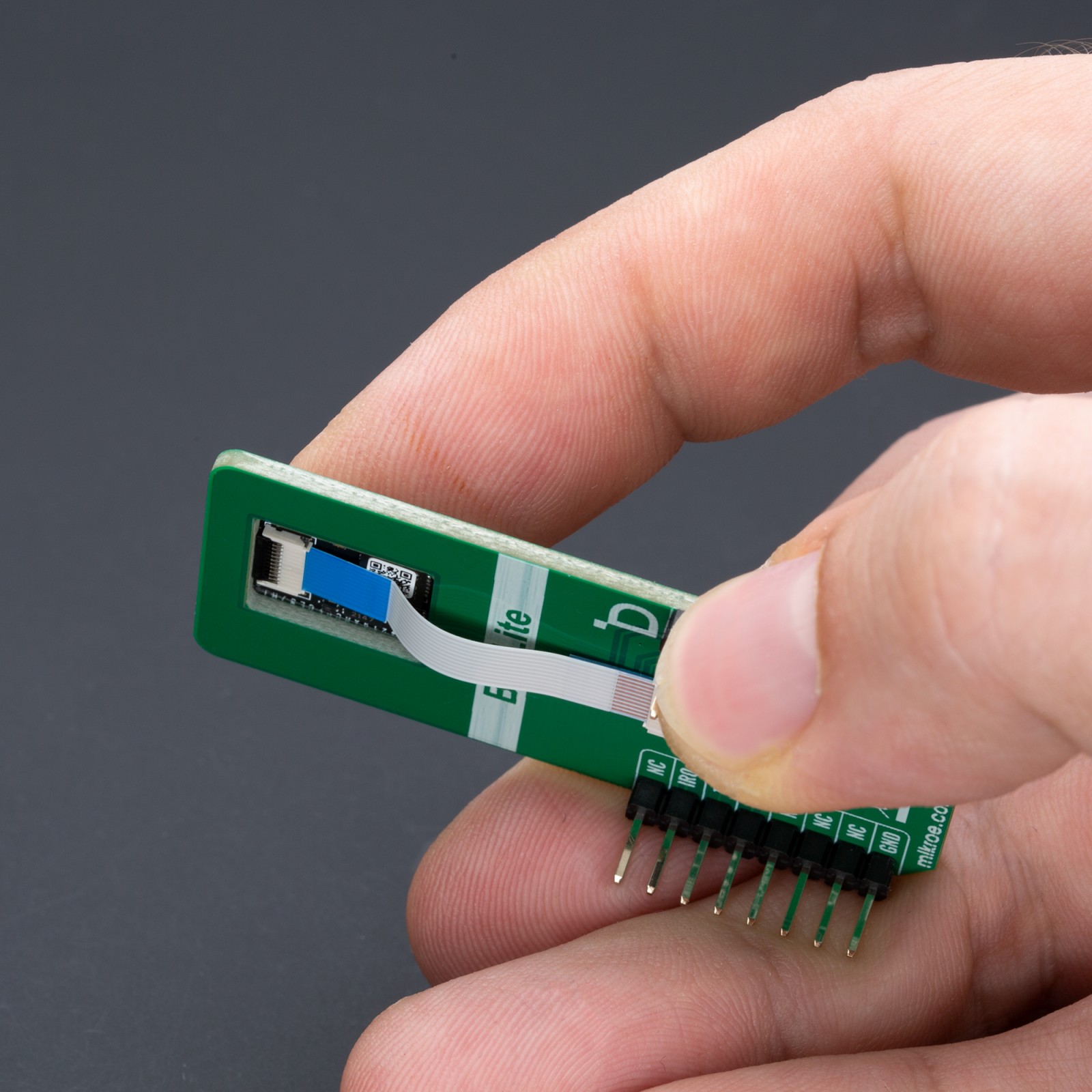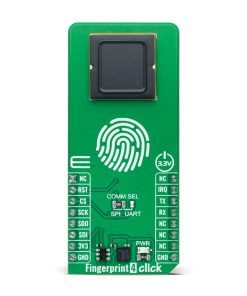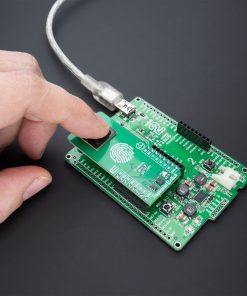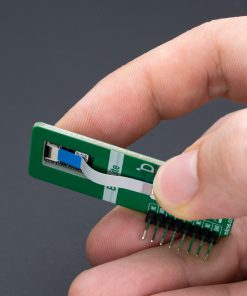Fingerprint 4 Click is an adapter Click board™ used to interface a compatible fingerprint sensor with the host MCU. This board features FINGERPRINTS BM-Lite Module, a complete biometric fingerprint solution ready to be used out-of-the-box. The BM-Lite Module combines superior biometric performance and a high standard of quality components to offer a comprehensive embedded solution for increased security and enhanced user convenience. It uses a 3D pixel sensing technology that can read virtually any finger, dry or wet, alongside simple serial commands with a configurable communication interface to enroll and verify. Its protective coating helps in protection against ESD, scratches, impact, and everyday wear and tear. This Click board™ is suitable for demanding industrial conditions and all-weather applications.
Fingerprint 4 Click is fully compatible with the mikroBUS™ socket and can be used on any host system supporting the mikroBUS™ standard. It comes with the mikroSDK open-source libraries, offering unparalleled flexibility for evaluation and customization. What sets this Click board™ apart is the groundbreaking ClickID feature, enabling your host system to seamlessly and automatically detect and identify this add-on board.
 Accel Click
2 × R355.00
Accel Click
2 × R355.00  RTC Click
1 × R390.00
RTC Click
1 × R390.00  WiFi Plus Click
1 × R2,250.00
WiFi Plus Click
1 × R2,250.00  tRF Click
1 × R1,050.00
tRF Click
1 × R1,050.00  RN4678 Click
1 × R855.00
RN4678 Click
1 × R855.00  EXPAND Click
1 × R260.00
EXPAND Click
1 × R260.00  Proximity Click
2 × R220.00
Proximity Click
2 × R220.00 

